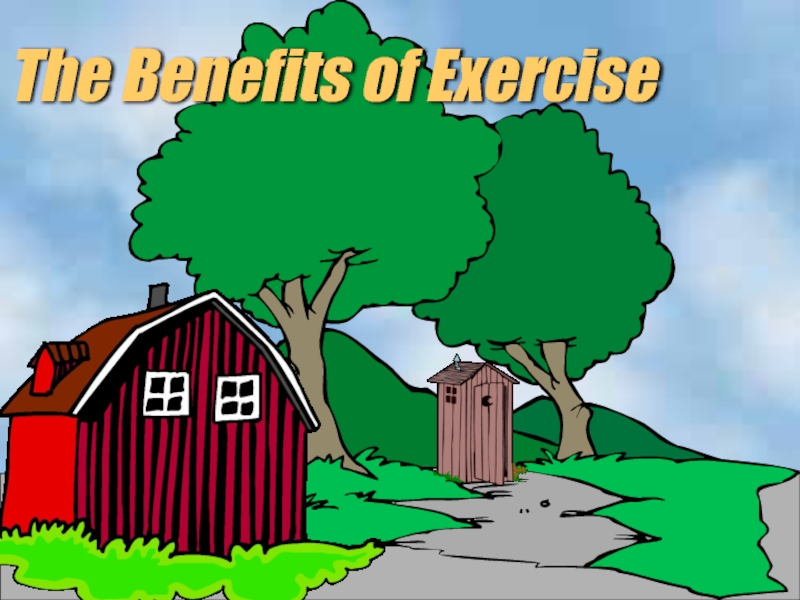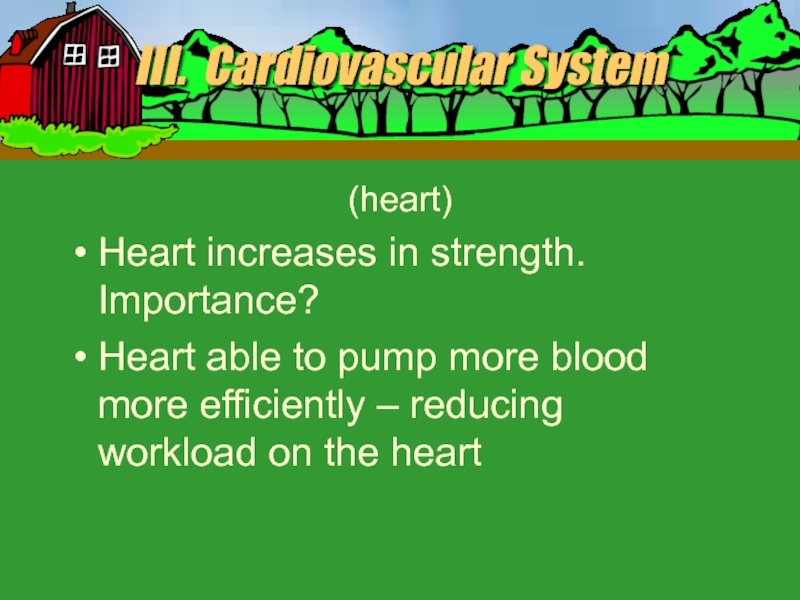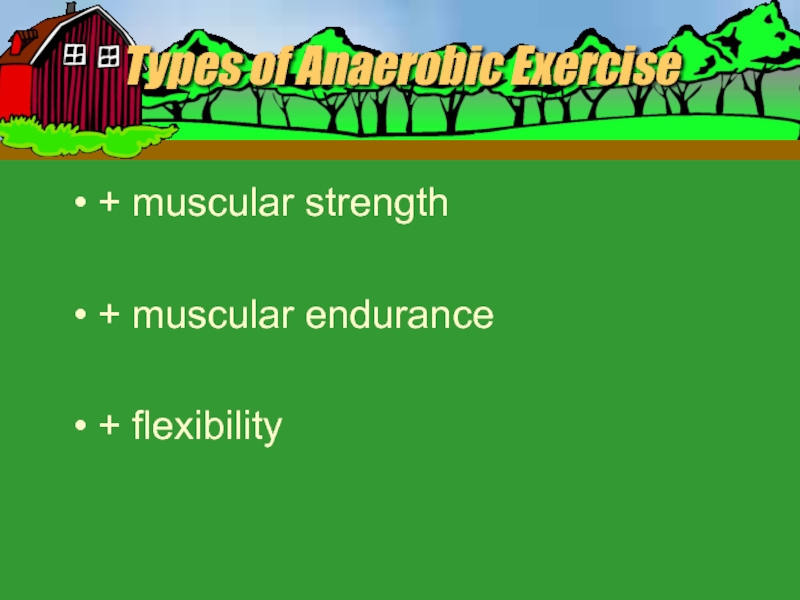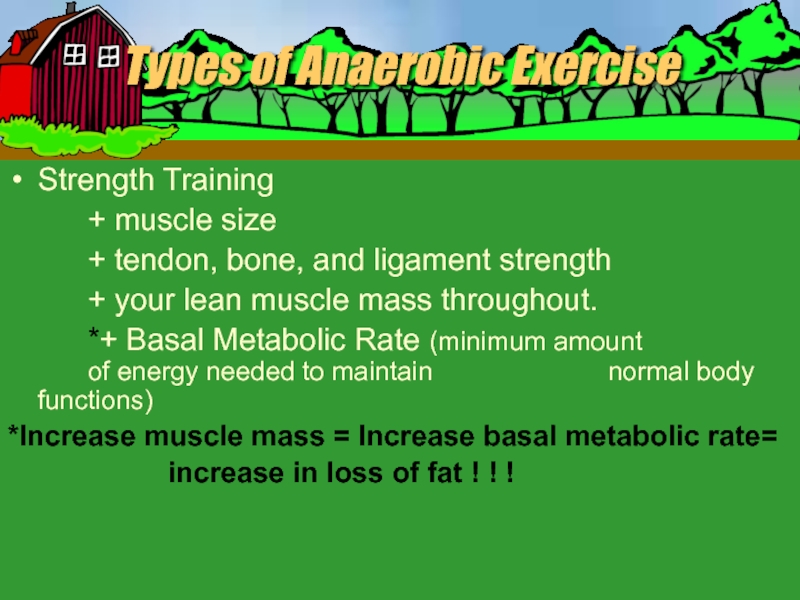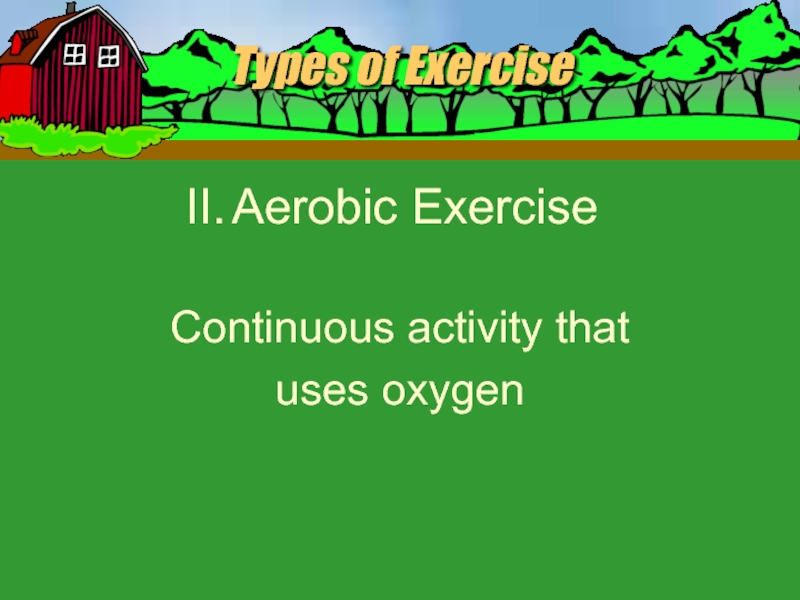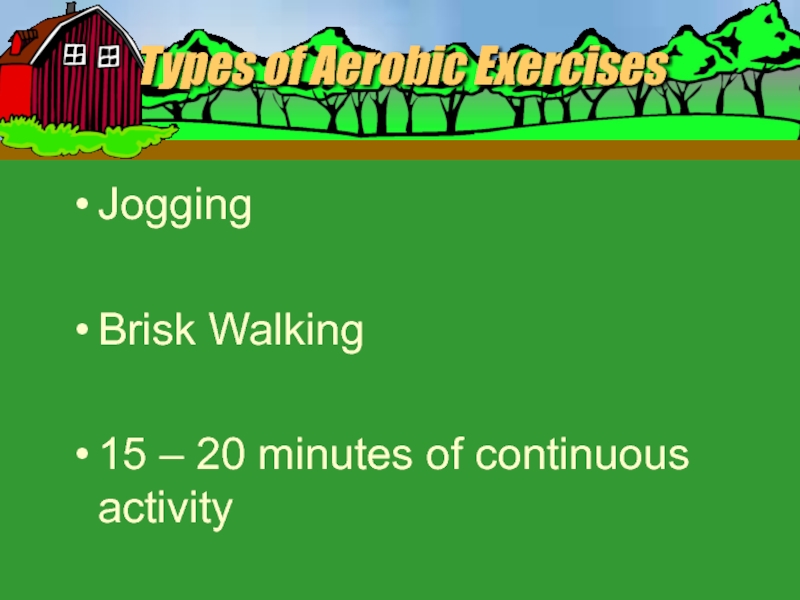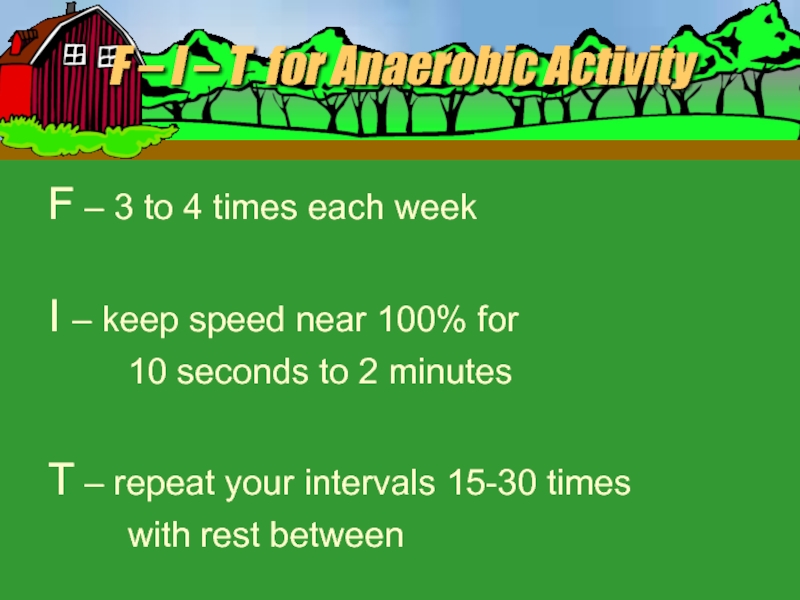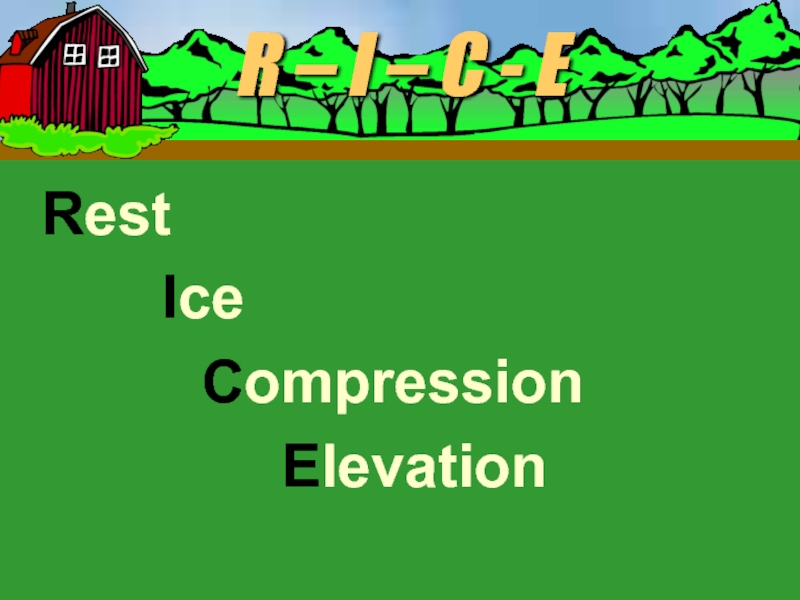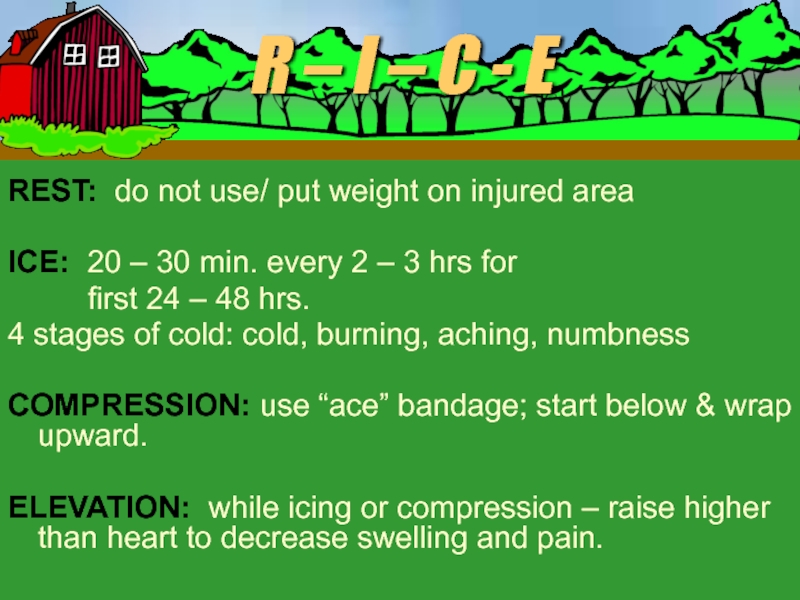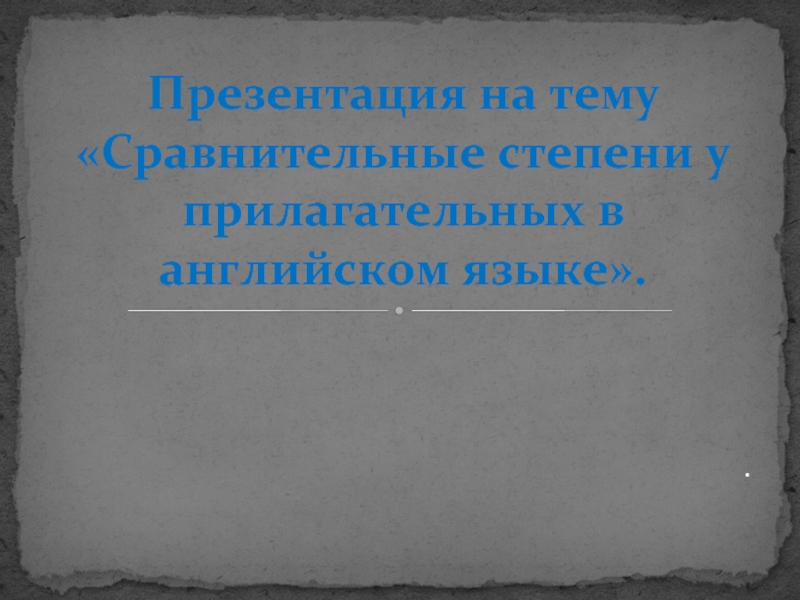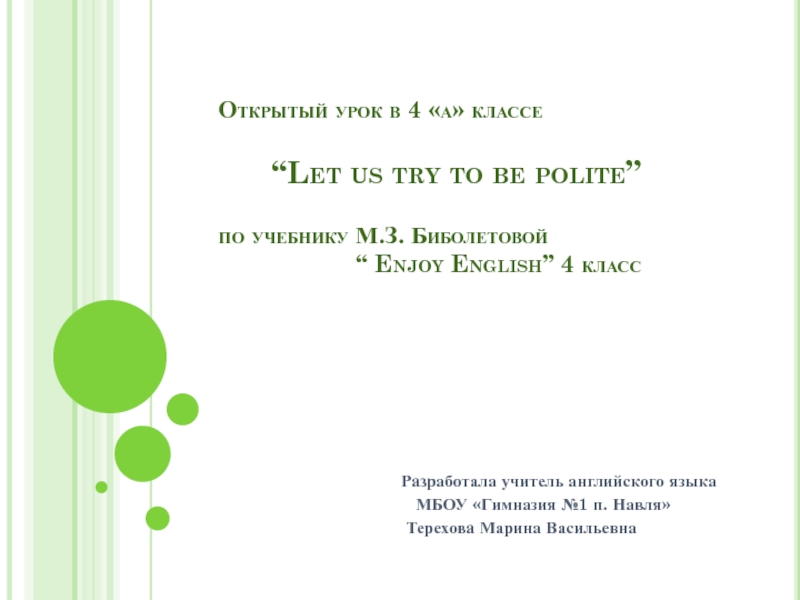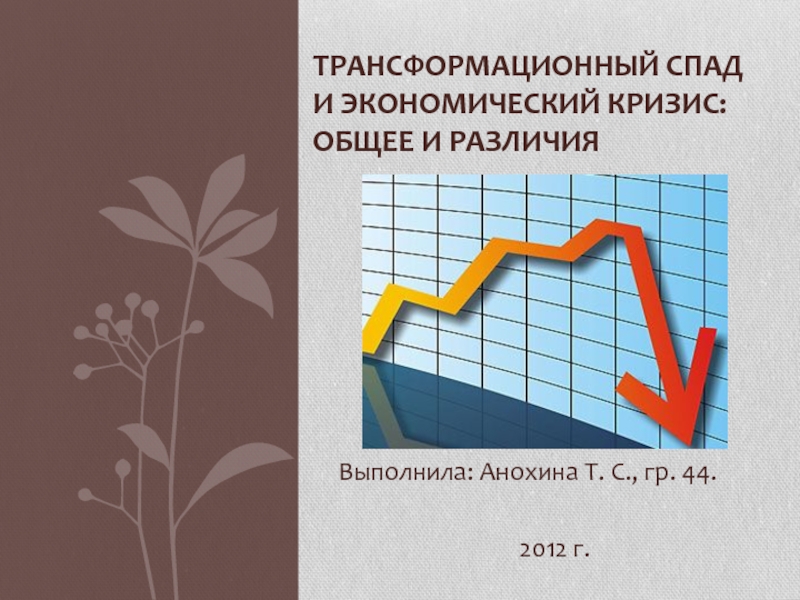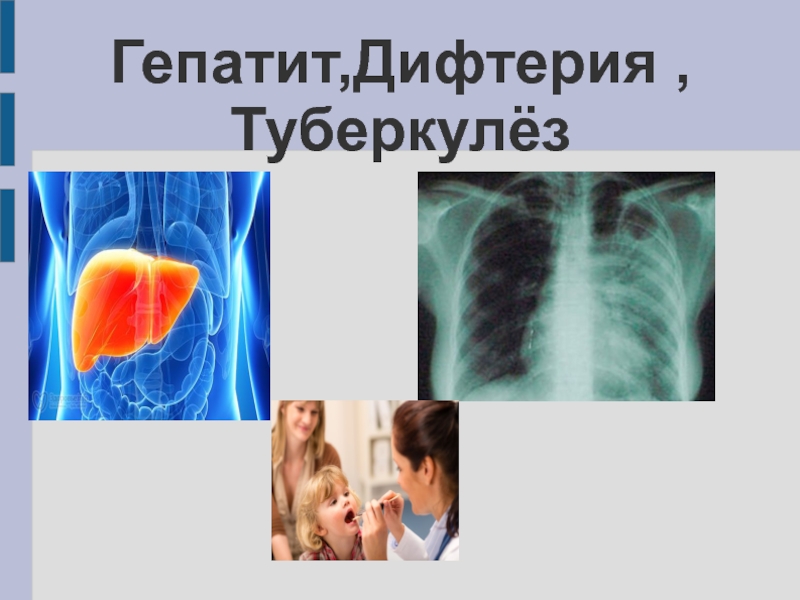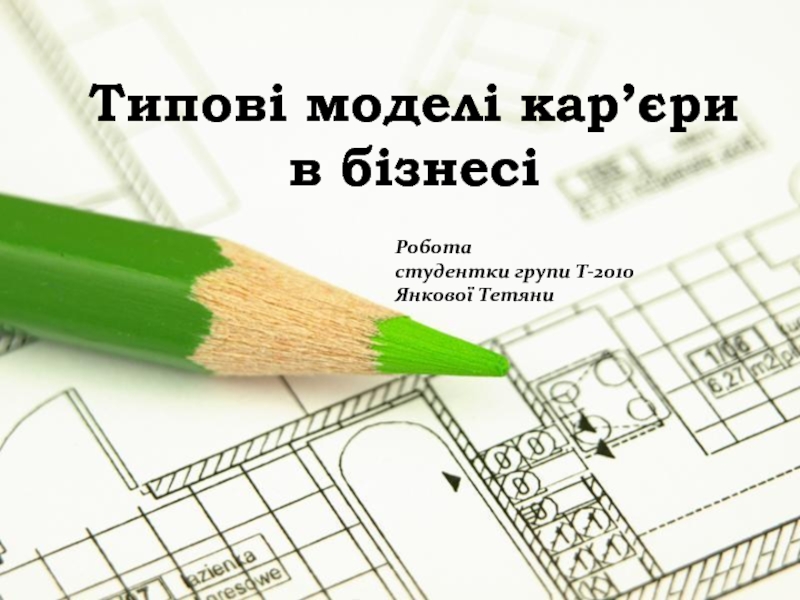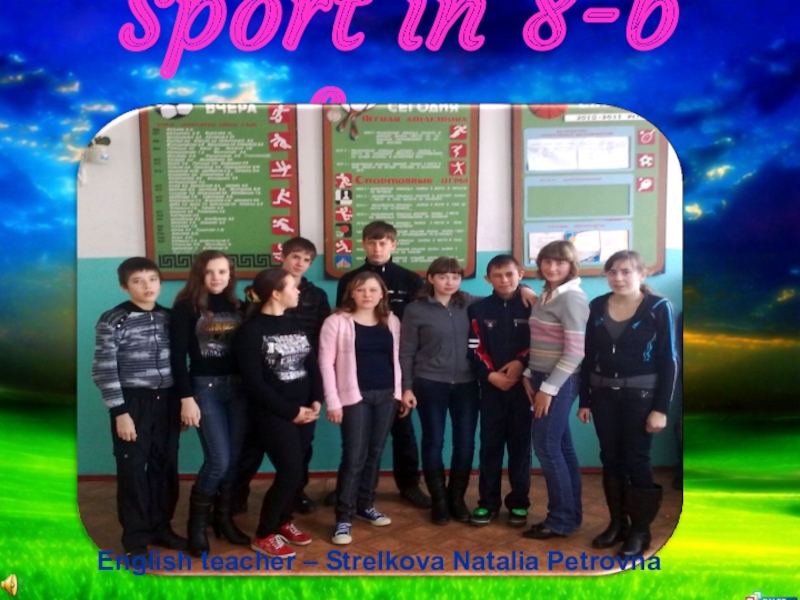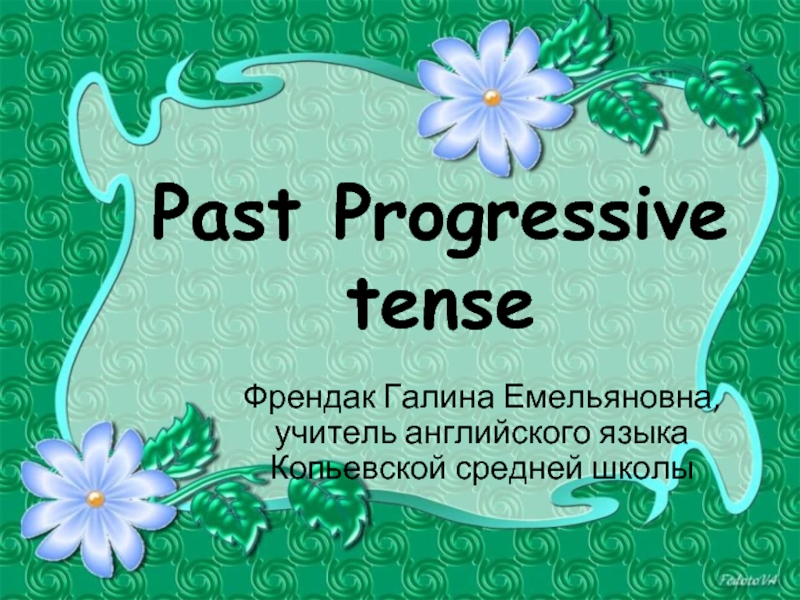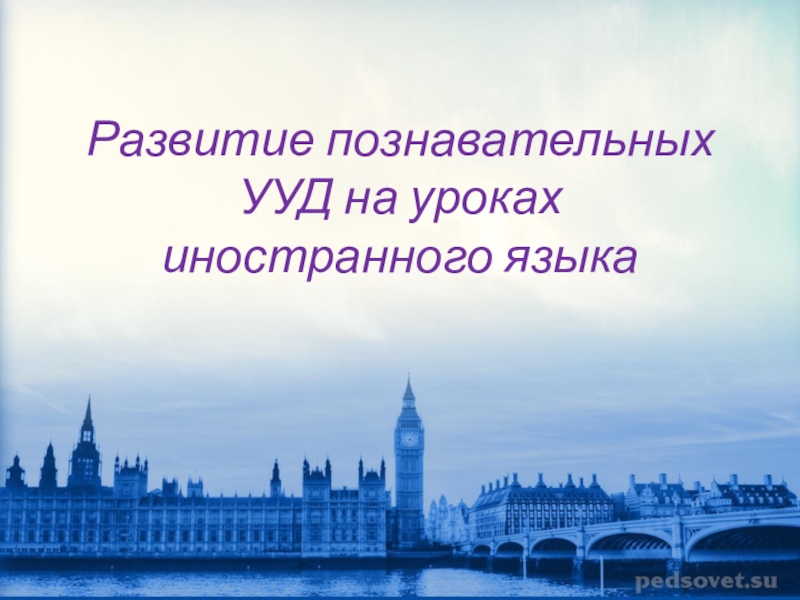Разделы презентаций
- Разное
- Английский язык
- Астрономия
- Алгебра
- Биология
- География
- Геометрия
- Детские презентации
- Информатика
- История
- Литература
- Математика
- Медицина
- Менеджмент
- Музыка
- МХК
- Немецкий язык
- ОБЖ
- Обществознание
- Окружающий мир
- Педагогика
- Русский язык
- Технология
- Физика
- Философия
- Химия
- Шаблоны, картинки для презентаций
- Экология
- Экономика
- Юриспруденция
The Benefits of Exercise
Содержание
- 1. The Benefits of Exercise
- 2. Nervous System(consists of the brain and all
- 3. II. Respiratory System(lungs)lung capacity increasesworks more efficiently
- 4. III. Cardiovascular System(heart)Heart increases in strength. Importance?Heart
- 5. IV. Mental HealthContributes to positive self esteemHelps
- 6. V. Social HealthHelps one meet new peopleHelps one find new area of enjoyment with friends
- 7. Types of Exercise I. Anaerobic
- 8. Types of Anaerobic Exercise+ muscular strength+ muscular endurance+ flexibility
- 9. Types of Anaerobic ExerciseStrength Training + muscle size +
- 10. Types of Anaerobic ExerciseIsometric – little or
- 11. Types of ExerciseAerobic ExerciseContinuous activity that uses oxygen
- 12. Types of Aerobic Exercise+ blood supply to
- 13. Types of Aerobic ExercisesJoggingBrisk Walking15 – 20 minutes of continuous activity
- 14. F – I - TF requency (how often)I ntensity (how hard)T ime (how long)
- 15. F – I – T for
- 16. F – I – T for Anaerobic
- 17. 3 Parts to a WorkoutWarm-Up: 3 –
- 18. R – I – C - ERest Ice Compression Elevation
- 19. R – I – C - EREST:
- 20. Скачать презентанцию
Nervous System(consists of the brain and all nerves throughout the body)Tunes it for more skillful body movementImproves your reaction timeImproves mental performance
Слайды и текст этой презентации
Слайд 4III. Cardiovascular System
(heart)
Heart increases in strength. Importance?
Heart able to pump
more blood more efficiently – reducing workload on the heart
Слайд 5IV. Mental Health
Contributes to positive self esteem
Helps deal with stress
Able
to relax
Leads to more productive work
Decreases fatigue
Слайд 7
Types of Exercise
I. Anaerobic Exercise
Oxygen is not used for energy;
intense physical activity in which the body’s supple of oxygen
to produce energy does not meet demand.Слайд 9Types of Anaerobic Exercise
Strength Training
+ muscle size
+ tendon, bone, and
ligament strength
+ your lean muscle mass throughout.
*+ Basal Metabolic Rate
(minimum amount of energy needed to maintain normal body functions)*Increase muscle mass = Increase basal metabolic rate=
increase in loss of fat ! ! !
Слайд 10Types of Anaerobic Exercise
Isometric – little or no movement; muscle
tension; pushing against wall.
Isotonic – repeated movements using weights; push-ups,
weightsIsokinetic – resistance is moved through entire range of motion; hydraulic
Слайд 12Types of Aerobic Exercise
+ blood supply to muscles and ability
to use oxygen
+ cardiovascular/ cardio respiratory function (heart and lungs)
+
threshold for lactic acid accumulation (soreness)- resting blood pressure for people with high blood pressure
- body fat and improved weight control
Слайд 15F – I – T for Aerobic Activity
F –
3-5 times each week
I – keep heart rate between 60-80%
MHRT – exercise continuously for minimum
of 20 minutes.
Слайд 16F – I – T for Anaerobic Activity
F – 3
to 4 times each week
I – keep speed near 100%
for 10 seconds to 2 minutes
T – repeat your intervals 15-30 times
with rest between
Слайд 173 Parts to a Workout
Warm-Up: 3 – 5 min. then
stretch 10 minutes
Work-Out: 20 – 30 min.,
3 – 5
times per wk.Cool-Down: gradually; “pooling”
Слайд 19R – I – C - E
REST: do not use/
put weight on injured area
ICE: 20 – 30 min. every
2 – 3 hrs for first 24 – 48 hrs.
4 stages of cold: cold, burning, aching, numbness
COMPRESSION: use “ace” bandage; start below & wrap upward.
ELEVATION: while icing or compression – raise higher than heart to decrease swelling and pain.
